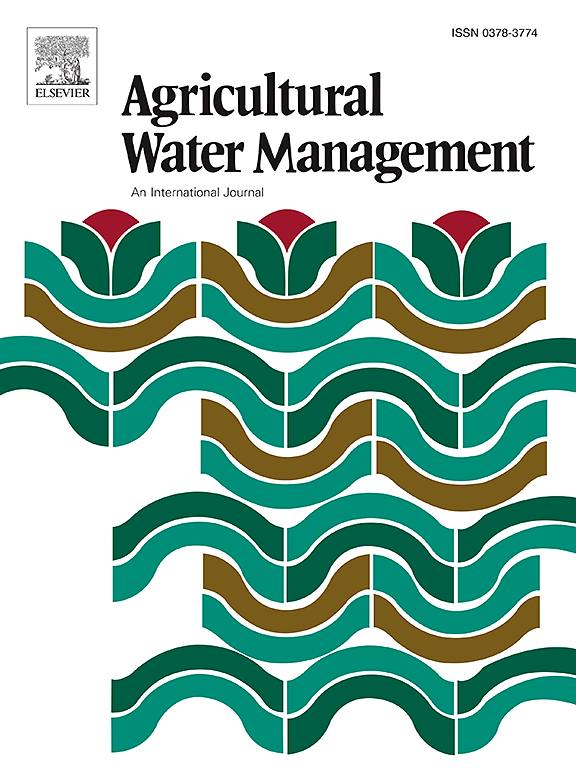Spatiotemporal dynamics and driving factors of irrigation water demands in China
IF 5.9
1区 农林科学
Q1 AGRONOMY
引用次数: 0
Abstract
China faces significant challenges due to escalating irrigation water demands and constrained water resources. However, comprehensive national-level analyses of irrigation water demands integrating multiple crops, spatial scales, and driving factors remain scarce. This study addresses this gap by examining the spatiotemporal dynamics and driving factors of irrigation water demand in China from 2000 to 2018, leveraging the Spatial Production Allocation Model (SPAM) dataset and applying the Penman-Monteith model and a multi-regional Logarithmic Mean Divisia Index (LMDI) decomposition approach. During the study period, the Net irrigation water demand (NW) peaked at 250.68 G m³ in 2013, with significant declines in the South and East but increases in the water-scarce North and Northwest. Rice dominated national NW, contributing 46–52 % of the total, while regional expansion in rice and cotton cultivation drove significant NW growth in the Northeast and Northwest. The Gross irrigation water demand (GW) exhibited a national decrease of 76.65 G m³, and the impacts of four driving factors -water saving technology, planting scale, planting patterns, and climate change - varied over time and across regions. Water-saving technology emerged as the most significant factor in reducing GW, offsetting 90.92 G m³ nationally. However, the expansion of irrigated farmland added 47.96 G m³, particularly in arid regions. Climate change exhibited regionally diverse impacts (-10.35–4.17 G m³), underscoring the need for targeted water management interventions. This study provides valuable insights for optimizing crop patterns, advancing irrigation technologies, and formulating region-specific policies to enhance agricultural water management and ensure food security in China.
求助全文
约1分钟内获得全文
求助全文
来源期刊

Agricultural Water Management
农林科学-农艺学
CiteScore
12.10
自引率
14.90%
发文量
648
审稿时长
4.9 months
期刊介绍:
Agricultural Water Management publishes papers of international significance relating to the science, economics, and policy of agricultural water management. In all cases, manuscripts must address implications and provide insight regarding agricultural water management.
 求助内容:
求助内容: 应助结果提醒方式:
应助结果提醒方式:


